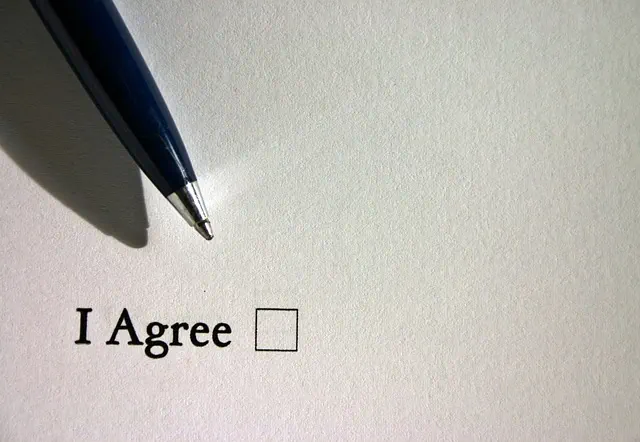Guide to Making An Income Protection Claim
Can’t work and must make an income protection claim through your superannuation fund? Get the most from your insurance benefits with our Ultimate Guide on how to claim income protection insurance.
Our legal guide explains income protection insurance, how to successfully claim IP benefits, and what to do if you have a claim dispute or rejection. So, let’s get started and ensure you and your loved ones have a brighter financial situation.
Key Topics
- Understand income protection insurance for financial safety.
- Gather the necessary documents and correctly complete the claim form to make a successful claim.
- Seek legal advice to increase your chance of winning an income protection claim.

Defining Income Protection Insurance
Income protection insurance, or income protection cover, provides financial safety when you are unable to work because of an illness or injury. When you have an approved claim, this type of insurance provides regular payments of a percentage of your pre-injury salary so you can pay bills when you are unable to work. To secure this financial safety net, you must understand how to claim income protection insurance payments.
Generally, an income protection insurance policy will have specific qualifying conditions and offset clauses, which can affect your regular benefit payments. Understanding the terms of your insurance policy is advantageous, and speaking with an experienced insurance broker will help you select the best coverage for your financial requirements.
Types of Income Protection Policies
In Australia, there are two primary types of income protection insurance policies, each addressing different needs and personal preferences.
Indemnity Value Policies
For indemnity value policies, the insured amount is a percentage of your pay at the time of your claim. Hence, if your income has declined since the policy purchase date, the insurer will reduce your payments. Alternatively, if you have variable pay, your payment value is calculated based on the medium annual income for your role over several years.
Agreed Value Policies
The insured amount for agreed-value policies is a percentage of a pre-defined figure at the time of policy purchase (i.e., your level of cover). Typically, this insurance coverage costs more, but it is a good choice for those with a variable annual income.
Key Policy Features
When assessing income protection insurance, it’s vitally important to scrutinise key policy features to ensure the best coverage for your situation. Hence, it would help if you considered the following:
- Waiting period: the time you have to wait before you can start receiving benefits, usually 14 to 90 days.
- Benefit period: the period of time you will receive benefits, typically between one and five years.
- Exclusions or limitations: any specific conditions or circumstances not covered by the policy, such as total and temporary disability.
- Definition of disability: Meeting your disability definition determines if you qualify for benefits payments as it establishes your inability to perform your job based on your medical condition.
By comprehending and assessing these policy elements, you can choose the income protection insurance that is best for you.
Insurance Premiums
Premiums are another critical aspect to consider when choosing an income protection policy. Here are some key points to keep in mind:
- Premiums are the payments you make to maintain your insurance policy.
- How much you pay for insurance will depend on your age, job, and selected coverage.
- Sometimes, these payments may be tax deductible, providing an additional financial advantage.
Lastly, optional riders can be added to your policy for extra perks, such as accident and sickness coverage or coverage for specific illnesses.
What Illnesses are Covered by Income Protection?
When claiming income protection insurance, your physical or psychological injury or illness does not need to be work-related and includes ailments like:
- Stroke and heart attacks
- Cancer
- Motor vehicle accident injuries
- Chronic fatigue
- Chronic and major illnesses
You can also claim income protection for mental illnesses like
- Depression
- Anxiety
- Post-traumatic stress disorder (PTSD)
- Schizophrenia
- Bipolar disorder
and all other recognised psychological conditions that prevent you from earning a wage.

How to Make a Claim for Income Protection Insurance
When you have an illness or injury that hinders your work capacity, swiftly starting the income protection claim process is paramount. Generally, there are four steps to making a claim for income protection insurance, which are:
- Speak with an income protection lawyers.
- Gather the necessary supporting documents.
- Complete the claim form accurately.
- Lodge your claim promptly.
Furthermore, following up with the insurer and maintaining regular communication during the claim process will help minimise hassle and ensure a successful claim.
Step 1: Speak with an Income Protection Insurance Lawyer
A knowledgeable income protection insurance lawyer will have your best interests in mind when filing a claim. They regularly negotiate benefit settlements with all the major insurance companies, so they know the techniques they use to minimise their liability. An effective solicitor will comprehensively research your T&Cs, understand the requirements for a successful payout, address the insurer’s concerns, and litigate rejected claims if required. Get free advice now >
Step 2: Gather the Supporting Documents
A winning income protection claim generally relies on compelling supporting documents that prove your medical ailment and how it impacts your ability to work. The most commonly required documents are:
- Medical records to demonstrate that you have a disability, injury, or illness that stops you from working.
- Proof of income, such as pay slips or tax returns, to show your pre-disability earnings
- Any other relevant information, such as witness statements or additional medical assessments.
Proof of income is also essential to determining your eligibility for benefits based on your former wages. Typically, you must submit the following paperwork:
- Salary continuance report
- Tax file number declaration
- Income replacement employer report
- Certified proof of age
- Tax return
Step 3: Complete the Claim Form Accurately
When making a claim, accurately filling out the claim form and including all the necessary documents speeds up the decision-making process, avoiding unnecessary delays and denials. Typically, the claim form requires policy information, details of your temporary disability, illness, or injury, and any relevant supporting information.
Step 4: Lodge the Claim and Follow Up
Once you have completed the claim form, please lodge it with your insurance provider, following their instructions. Timely submission of the claim is necessary, as there will be applicable time limits.
Throughout the claims process, staying in touch with the insurer is critical since they can have questions or need more information to decide. Hence, being proactive and engaged in the process will increase the likelihood of winning an income protection claim.
What Happens After a Successful Income Protection Claim?
After an approved income protection claim, you will receive monthly income until you reach the end of the benefit period outlined in your insurance policy terms. These monthly payments replace your regular income. In Australia, most income protection payouts continue for:
- a maximum of two years
- until you are 65 years old
- or are unable to work again.
At this time, you could be eligible to make a total and permanent disability claim and receive a lump sum payout.
Handling Claim Disputes and Rejections
Stay positive, even if you have a denied income protection claim, as you can appeal. In this case, your best choice is to
- Understand the reasons for rejection.
- Get informed legal advice to resolve the dispute.
Claim denials happen for several reasons, including differences in medical assessments, failure to disclose pre-existing conditions and insurance exclusions. You can improve your chance of winning by addressing these concerns and making a compelling argument.
More about denied insurance claims >
Common Reasons for Claim Denial
Some common reasons for claim denial include:
- Lack of documentation
- Pre-existing conditions
- Not meeting policy requirements
- Incorrect or incomplete information
- Fraud or misrepresentation
- Not following the treatment plan
- Submitting a late claim
Knowing the common reasons for rejected claims can help you proactively manage your case, which increases your chance of a successful income protection claim. However, suppose the worst happens, and you have a denied claim because of differing medical opinions, non-disclosure, or a policy exclusion. In that case, you must address these issues when lodging a dispute or taking further legal action.
How Income Protection Lawyers Help with Successful Claims
Your best chance of winning income protection claims (or reversing a claim dispute or rejection) is to seek effective legal representation. Lawyers specialising in insurance claims will guide you step by step through the claim process, ensuring you understand your rights and options as a policyholder.
Choosing Aussie Injury Lawyers when you cannot work and need regular monthly income means accessing our 99% success rate and 100% No Win, No Fee funding. It’s free to know if you have a valid case, your insurance policy terms, chance of success, and payment value. Call Now – 1300 873 252
Furthermore, if your temporary disability becomes a permanent total disability, we can help you make a successful TPD claim and receive a once-off lump sum payout.

Income Protection Claims FAQs
How much does income protection pay out?
When you have an approved income protection claim, you will receive a monthly benefit equal to approximately 75% of your previous earnings. This monthly benefit helps fund your living expenses and other costs while you cannot work so you can prioritise your recovery.
Can I claim income protection with a pre-existing condition?
Depending on your circumstances and policy terms and exclusions, you can claim income protection with a pre-existing condition, which varies between income protection insurance policies.
Is income protection hard to claim?
Getting expert legal advice for income protection claims is best, as success generally relies on specialist support. You must understand your policy terms so you can claim all your entitlements quickly and for as long as you need for a full recovery.
When can you claim your income protection insurance?
If you are temporarily unable to work and earn an income from your regular job due to an injury, illness, or psychological disorder, you could be eligible to make a claim against your income protection insurance. Most policies include a waiting period of between 14 days and two years before receiving regular monthly payments.
Are income protection payments taxed?
Although what you pay for income protection is generally tax-deductible if you receive income protection insurance benefits, you must report them on your tax return as part of your taxable income.
How do I make an income protection claim for depression?
Although it’s possible to make a claim against an IP insurance policy for depression (and other mental health conditions), insurers often attempt to avoid making a benefit payment. That’s because you generally see a physical injury or illness, and psychological disorders are “hidden”. Hence, your best chance of a successful income protection claim is to work with experienced income protection lawyers who regularly negotiate with all the leading Australian insurance providers.
What is the waiting period for income protection claims?
For most income protection policies, the claim waiting period is either 30, 60 or 90 days. You will receive no payments during this time. Monthly payments are typically backdated and start when the waiting period ends.





